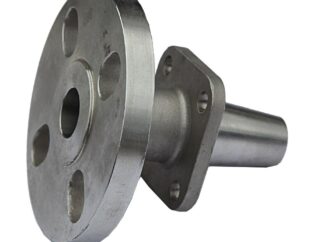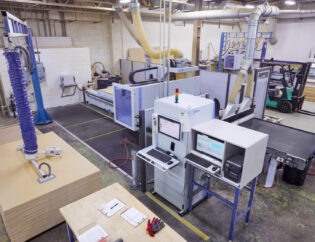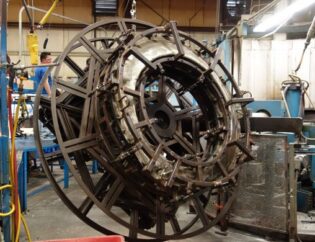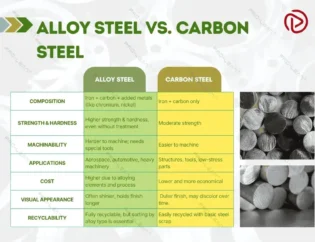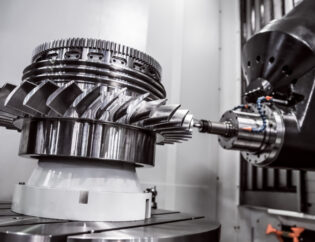Turning center technology represents a significant advancement in the field of machining, combining the capabilities of lathes and milling machines into a single, efficient unit. This guide aims to demystify the process of utilizing turning centers, emphasizing their role in enhancing productivity and precision in manufacturing.
Readers can expect to learn about the fundamental principles of turning centers, including their design, operation, and the various applications across different industries. Additionally, we will explore best practices for setup, tooling, and maintenance to maximize performance and longevity.
By the end of this guide, you will have a comprehensive understanding of turning centers, empowering you to make informed decisions in your machining processes. Whether you are a seasoned professional or a newcomer, this resource will equip you with the knowledge to leverage turning centers effectively.
A Comprehensive Guide to CNC Turning Centers: Exploring the World of Precision Machining
In today’s highly advanced manufacturing industry, CNC turning centers play a crucial role in achieving precise and efficient machining operations. These automated machines have revolutionized the way we produce parts and components, offering enhanced accuracy, higher productivity, and flexibility. In this article, we will delve into the world of CNC turning centers, exploring their functionality, applications, benefits, and more. So, let’s embark on this educational journey and discover the wonders of CNC turning centers.
Understanding CNC Turning Centers
CNC (Computer Numerical Control) turning centers are sophisticated machines designed for precision machining. They are capable of performing various operations, including turning, drilling, milling, and threading. Unlike traditional lathes, CNC turning centers can handle complex geometries and multiple machining tasks, making them essential in modern manufacturing.
Technical Features of CNC Turning Centers
The technical features of CNC turning centers are what set them apart from conventional machining tools. Below is a comparison table highlighting some of the key technical specifications:
| Feature | CNC Turning Center | Traditional Lathe |
|---|---|---|
| Control System | Computer-controlled (CNC) | Manual or NC (Numerical Control) |
| Axes | 3, 4, or 5 axes | Typically 2 axes |
| Tooling | Live tooling capabilities | Fixed tooling |
| Enclosure | Fully enclosed for safety | Minimal or no enclosure |
| Production Speed | High-speed production | Slower production |
| Complexity of Parts | Capable of complex geometries | Limited to simpler shapes |
| Setup Time | Reduced setup time | Longer setup time |
Types of CNC Turning Centers
CNC turning centers can be categorized based on their design and functionality. The following table outlines the main types of CNC turning centers:
| Type | Description |
|---|---|
| Horizontal Turning Center | Most common type; uses gravity to remove chips and allows for longer beds. |
| Vertical Turning Center | Ideal for heavy, short parts; utilizes gravity for workholding. |
| Multi-Spindle Turning Center | Equipped with multiple spindles for simultaneous machining operations. |
| Swiss Turning Center | Designed for high-precision, small parts; features a sliding headstock. |
Applications of CNC Turning Centers
CNC turning centers are widely used across various industries, including automotive, aerospace, medical, and more. Their versatility allows them to produce a range of components, from simple cylindrical parts to complex assemblies. For instance, in the automotive industry, CNC turning centers are used to manufacture engine components, while in the medical field, they produce precision instruments.
Advantages of CNC Turning Centers
The advantages of CNC turning centers over traditional machining methods are significant:
- Precision and Accuracy: CNC turning centers provide high levels of precision, ensuring consistent quality across production runs.
- Increased Productivity: These machines can operate continuously, reducing downtime and increasing output.
- Flexibility: CNC turning centers can be programmed to produce various parts, allowing for quick changes in production.
- Reduced Labor Costs: Automation minimizes the need for manual labor, leading to cost savings.
- Enhanced Safety: Fully enclosed designs reduce the risk of accidents and improve operator safety.
Conclusion
CNC turning centers are a vital component of modern manufacturing, offering unparalleled precision, productivity, and versatility. Their ability to perform multiple machining operations makes them indispensable in various industries. As technology continues to evolve, CNC turning centers will likely incorporate even more advanced features, further enhancing their capabilities.
FAQs
1. What is a CNC turning center?
A CNC turning center is a computer-controlled machine that performs various machining operations, including turning, drilling, and milling, with high precision.
2. How does a CNC turning center differ from a traditional lathe?
CNC turning centers are more advanced, capable of multiple operations and often fully enclosed, while traditional lathes typically perform only turning operations.
3. What industries use CNC turning centers?
CNC turning centers are used in various industries, including automotive, aerospace, medical, and manufacturing.
4. What are the benefits of using CNC turning centers?
Benefits include increased precision, productivity, flexibility, reduced labor costs, and enhanced safety.
5. How do I choose the right CNC turning center for my needs?
Consider factors such as machine size, spindle speed, tooling options, and the specific applications you require.

